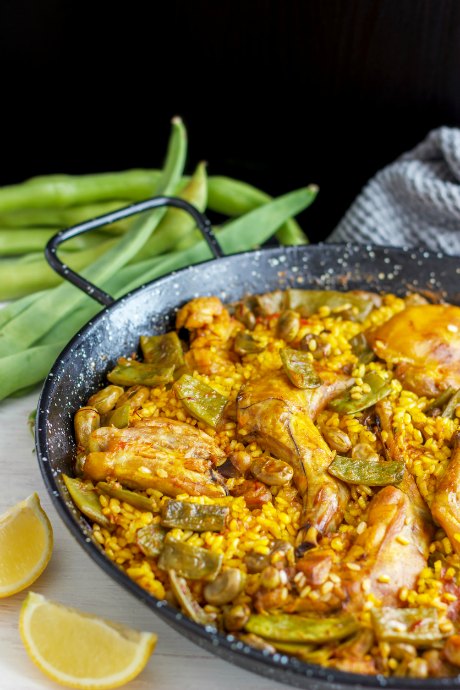Paella Recipe Roundup: Have It Your Way
Posted by Julie on Jun 8th 2016
Paella is one of those dishes that sounds so intimidating, many people won't even attempt to pronounce it, let alone make it. In fact, there are as many ways to make paella as there are chefs making this classic Spanish dish. No single paella recipe is the one true original. However, there are some tips and tricks to keep in mind no matter how you go about it.
Making paella is definitely labor-intensive, and much of that labor involves prep work. Be sure to chop, dice, mince and measure all ingredients in advance. In particular, the rice and the stock or broth you use are key. Some recipes insist on short grain Spanish bomba rice, although others allow Arborio rice as an acceptable substitute. If you don't make homemade stock or broth, spring for the highest quality packaged version you can find. Finally, while you can rely on paprika alone to impart the characteristic yellow color to the rice, check at a local Indian grocery for saffron strands.
One reason to try a paella recipe this summer is that it's traditionally cooked over a wood fire, which makes it a great candidate for your backyard grill. Because the layer of rice at the bottom of the pan should be as thin as a small finger, you'll need a large cooking surface to ensure even heat distribution.

Valencian paella remains true to its Spanish roots and includes rabbit, snails, tomato, beans and rosemary. Seafood paella swaps out all of these ingredients except tomato, subbing in clams, mussels, squid and more. Mixed paella is exactly that: anything goes, from rabbit to clams. Regardless of the ingredients you use, sources agree that once you've stirred in the rice and the broth, don't cover your dish or even touch it again until it's ready to serve. ( Shaking the pan may be permissible.)
Even so, a few key questions regarding paella remain unanswered. First, does onion belong in paella? Some say onions are fine, others say onions are unforgivable. We prefer not to come down on either side of this debate, declaring it chef's choice.
Second, how can you achieve that caramelized bottom crust known as socarrat without burning the rice? Carefully, and with lots of practice. Some sources advise cranking up the heat for a few minutes toward the end. Others insist you should listen for a crackling sound. Socarrat seems to be an elusive outcome that takes trial and error to achieve.
Finally, is a paella pan truly necessary? Not if you have a sufficiently large skillet. Stainless steel or aluminum is best to maximize your chances of creating a socarrat, as opposed to nonstick or cast iron.
Ready to try a paella recipe or three? Here are our picks for Valencian paella, seafood paella, and mixed paella recipes to get you started.
Paella Valenciana (Valencian Paella)
This paella recipe from the blog MW kitchen is the most authentic Valencian version we could find that wasn't written in Spanish. By a Londoner who lived in Valencia, this post paints a descriptive picture of the Spanish culture that created paella. While we're not in a position to eat paella in a Valencian home, as the author advises, we're inspired to give it a try in our own home.
Paella de Marisco (Seafood Paella)
Likewise, this paella recipe from Spanish e-deli Iberi Gourmet is another impressive example that's fortunately written in English. We really need to brush up on our Spanish if we're going to get serious about paella. Iberi Gourmet also offers a couple smart tips and tricks. They even resort to an all-caps warning to let the paella cook once you've stirred in the rice and broth.
Paella Mixta (Mixed Paella)
While some sources will rail against mixed paella as the Americanized version, there are plenty of Paella Mixta recipes in Spanish. We like to think of mixed paella as an opportunity to combine your favorite flavors without going overboard. La Tienda, a US-based retailer of products from Spain, acknowledges the conflicts surrounding mixed paella. They offer this Paella Mixta recipe that sounds wonderful nonetheless.

